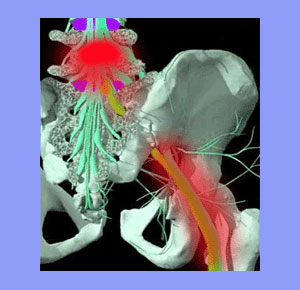
Sciatic nerve decompression is a type of treatment protocol that is used to resolve instances of problematic impingement on the actual ischiatic nerve or the spinal nerve roots that go on to form the ischiatic nerve. There are several methods of decompressing these neurological structures, using surgical and noninvasive care regimens. Obviously, the type of therapy indicated will rely completely on the diagnosed source of structural compression and the location in which the compression occurs.
Decompression treatment is geared towards ending pressure that is placed on the neurological structure, thereby ending the symptoms that are experienced throughout the anatomical areas which are innervated by the sciatic nerve.
This guide helps patients to learn more about targeted treatments for verified compression syndromes that are responsible for causing sciatica pain, weakness, numbness and paresthesia in the buttocks, legs and/or feet.
Actual Sciatic Nerve Decompression
It is rare that the fully formed sciatic nerve will suffer structural compression, but it can occur. The following circumstances represent the usual case profiles of sciatic nerve impingement:
Piriformis syndrome is a condition wherein the piriformis muscle compresses the sciatic nerve in the region of the buttocks. This powerful deep muscle can clamp down on the sciatic, eliciting symptoms consistent with any form of pseudo-sciatica.
Piriformis syndrome is usually treated conservatively, with exercise, physical therapy and pharmaceutical methods of care. Injection therapies have also proven useful to many patients. In some rare circumstances, these conservative and moderate treatments will temporarily or permanently end the piriformis constriction, allowing the nerve to decompress naturally.
In other very rare instances, surgery is performed to free the sciatic nerve from the piriformis muscle, typically ending symptoms, as long as the diagnosis is accurate and the procedure goes well, without significant complications.
Other case-specific reasons for fully-formed sciatic nerve compression can occur due to traumatic injury, tumor formation or other processes in the buttocks or upper leg. In these scenarios, surgery might be indicated to decompress the nerve from whatever occurrence is compromising its neurological functionality.
Nerve Root Decompression
Far more common are techniques that are utilized to decompress the spinal nerve roots from various impingement processes in the lumbar and sacral spinal regions. There are many possible causes of spinal nerve root compression that might affect the tissues between L4 and S3:
Herniated discs and osteoarthritic processes are the most often cited explanations for structural compression of one or more nerve roots.
Scoliotic and lordotic changes might also explain compressive neuropathies in the lower back.
Spondylolisthesis is a possible reason why a pinched nerve root might exist.
Finally, sacralized vertebra, congenitally narrowed central or foraminal canals and transitional vertebrae might play roles in neurological compression in rather atypical circumstances.
Nonsurgical treatment of some pinched nerves can be achieved using any of modern versions of decompression therapy, including the DRX9000, AccuSpina, Antalgic-Trak or VAX-D systems. In less common situations, chiropractic techniques, such as COX therapy, might be able to decompress a nerve root. All of these noninvasive treatment options work best for pinched nerve that are enacted by intervertebral disc pathologies.
Surgical decompression can treat any of the above causations of compressive neuropathy conditions. Surgical interventions can take many forms, but usually entail laminectomy, discectomy or corpectomy operations, depending on the actual compressive process demonstrated.
Sciatic Nerve Decompression Results
Nerve compression is a diagnosis that is pronounced far more often than it actually occurs. In fact, many cases of suspected neurological compression are illogical from a symptomatic point of view, since the manifestations do not often meet the clinical expectations for location or expression.
Prior to undergoing any type of decompression treatment, it is always advised to seek expert symptomatic correlation with a specialist in spinal neurology. When neurological compression is verified, targeted treatment stands a reasonable chance of providing a lasting cure. However, there are many variables that can still lead to poor treatment results, including any of the following factors:
Structural compression can permanently damage neurological tissue, causing enduring deficits even after successful decompression.
Many dorsal surgeries do tremendous collateral damage to the spinal structures, sometimes causing nerve or spinal cord damage and other times, creating new pain syndromes in their wake, despite successful decompression.
Many diagnoses are unfortunately wrong, leading to poor treatment results. In most of these scenarios, there is nerve effacement, but no compression by the offending structure. Meanwhile, there is another unidentified causation that is eliciting the symptoms. Since the incorrect source of pain was treated, curative results in these situations are usually disappointing.





